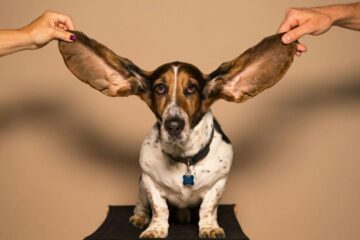Most dog owners are conscientious about their pet’s health and wellbeing, but may not think about their pet’s dental health. Dental disease is the most common problem seen in dogs, and can lead to other health problems if left untreated. Luckily, it’s easy to keep your dog’s teeth healthy at home with a few simple steps. Keep reading for tips on how to brush a dog’s teeth!
How to Brush a Dog’s Teeth at Home?
There are a few things you’ll need in order to brush your dog’s teeth at home: dog specific toothpaste (or some baking soda paste), a dog toothbrush, and plenty of patience! Here are some tips and tricks on how to brush a dog’s teeth.
- Choose a toothpaste that’s specifically designed for dogs and that your dog is likely to enjoy the taste of. There are many different flavors available, so ask your veterinarian or another pet owner for their recommendation.
- Put a small amount of toothpaste on your finger and let your dog lick it off to get them used to the taste.
- Once your dog is comfortable with the toothpaste, put a pea-sized amount on the toothbrush and let them lick it off.
- Gently insert the toothbrush into your dog’s mouth and start brushing in a circular motion. Be sure to avoid the gums, which can be sensitive.
- Brush for one minute, then remove the toothbrush and let your dog lick it clean.
- Repeat this process until you’ve brushed all of your dog’s teeth (both front teeth and back teeth).
- If your dog is afraid of the toothbrush, you can start by rubbing your finger with a toothpaste on their gum line. This will help your dog get used to this activity, same as licking the toothpaste.
- Keep the brushing sessions short.
- Small dogs will likely only need their teeth brushed once a week, while larger dogs may need to be brushed 2-3 times per week.
With a little patience and practice, you’ll be able to brush your dog’s teeth like a pro!
Dog Teeth: Oral Health and Problems
Now you know how to brush a dog’s teeth to prevent dental problems. Dental disease is the most common issue seen in dogs, and can lead to other health problems if left untreated.
Good oral hygiene is important for your dog’s overall health, and can help prevent gum disease, tooth decay, and bad breath. Brushing your dog’s teeth on a regular basis is the best way to keep their mouth healthy, but it’s also important to have their teeth checked by a veterinarian on a regular basis.
X-rays may be necessary to check for tartar buildup or tooth decay that can’t be seen with the naked eye. If your dog is showing any signs of dental disease, such as bad breath, yellow or brown teeth, excessive drooling, or pawing at the mouth, be sure to get your dog to the vet for an examination.
Plaque and tartar can build up on your dog’s teeth just like they can on human teeth. This buildup can lead to gum disease and periodontal disease, which is the leading cause of tooth loss in dogs. Regular brushing, along with professional cleanings by a veterinarian, can help prevent this from happening.
Professional Dental Care for Dogs and Teeth Brushing
While brushing your dog’s teeth at home is the best way to keep their teeth healthy, veterinary dental cleanings are also important. These cleanings can remove plaque buildup from top and bottom teeth, and can help prevent more serious problems from developing.
Professional cleaning should be done in a veterinary clinic every one to two years, depending on your dog’s individual needs
Dog Treats for Oral Health
How to brush a dog’s teeth and what else to do to keep them healthy? In addition to regular brushing and professional cleanings, there are also a number of dog treats available that can help keep your dog’s teeth healthy. These treats are specifically designed to remove plaque and tartar, and can be a great way to supplement your dog’s oral care routine.
Praise your dog for good behavior during brushing their teeth, and give them a delicious treat afterwards to help make the experience more positive.
To keep your dog’s teeth clean and healthy, consider giving them water additives as well. Water additives can help remove plaque and tartar, and can also help freshen your dog’s breath. You can find them at most pet stores.
Human Toothpaste or a Dog Toothpaste?
When it comes to toothpaste, you’ll want to use one that’s specifically designed for dogs. Human toothpaste can be harmful to dogs if swallowed, and may contain ingredients that can irritate their mouths. Human toothpaste can contain xylitol, which is toxic to dogs, so it’s important to avoid using it on their teeth.
There are many different flavors of dog toothpaste available, so ask your veterinarian or another pet owner for their recommendation.
How Often Should I Brush My Dog’s Teeth?
You should brush your dog’s teeth at least once a week, but daily brushing is even better. Be sure to use a soft-bristled toothbrush, and avoid using human toothpaste. You can also give your dog dental chews and treats to help keep their teeth healthy. When it comes to oral care for puppies, brushing their teeth should become a part of your daily routine.
How to brush a dog’s teeth at home? Now you know it’s easy!












